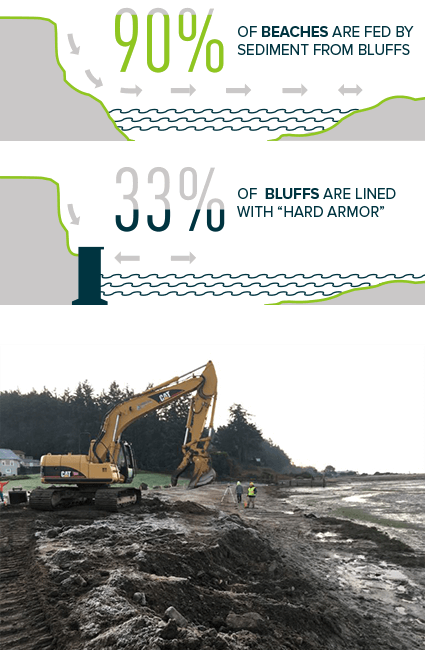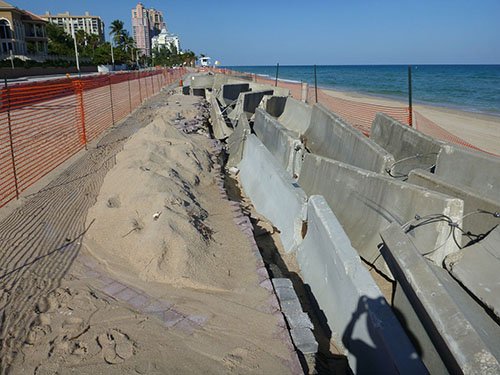Shore Protect Team Fundamentals Explained
Wiki Article
Shore Protect Team Fundamentals Explained
Table of ContentsShore Protect Team Fundamentals ExplainedWhat Does Shore Protect Team Do?8 Simple Techniques For Shore Protect TeamAll about Shore Protect TeamLittle Known Facts About Shore Protect Team.Some Known Questions About Shore Protect Team.The Main Principles Of Shore Protect Team
Reduction in residential property value: As the location tourism is influenced by disintegration, so then is the economic climate. Customers are much less most likely to search for a coastline residence that might be destroyed at any kind of moment by the upcoming flooding and disintegration emergency situation. Consequently, home worth can go down exceptionally and influence the entire area.Whether a coastline is simply small and jampacked or needs to shut completely for the security of the community and neighboring properties, this considerably impacts tourism. In turn, regional economic situations are affected (https://coolors.co/u/shore_protect_team). Threat of injury: The boosted risk of flooding and architectural failings triggers a boosted threat of injury to nearby vacationers and community members

is home to even more than 84,240 miles of coastline with 41% of it subjected to the open ocean. Coastal designers supervise of safeguarding the coastline versus modifications by decreasing the harmful impacts of both all-natural and synthetic events. Coastline stablizing is directly associated to their task. Waterfront hotels: Since coastline disintegration influences tourism, it impacts the success of beachfront resorts.
The Best Strategy To Use For Shore Protect Team
Coastal industrial businesses: No visitors indicates no service. Coastal state parks: State parks that exist along shorelines are at danger of damages.Difficult stablizing makes use of manufactured frameworks as defense to control disintegration. Most forms of tough stablizing like seawalls and sheet metal are not optimal for coastline stablizing.
Shore Protect Team Things To Know Before You Get This
There's also not nearly enough proof of their performance relying on the sort of coastline and regional conditions. Hard stablizing techniques tend to be more challenging to install and do not match the all-natural visual, standing out like a sore thumb and damaging regional environments in many circumstances. Coastline sustenance is the procedure of including lost sand and sediment back to coastlines after erosion has actually occurred.TrapBags help in the procedure of coastline nutrition by protecting all-natural ecosystems and enabling plants to grow. They're: Ecologically pleasant: You can utilize indigenous soil both to surround and to fill up the TrapBags.

The 15-Second Trick For Shore Protect Team
They can also be mounted without any type of heavy equipment. Economical: TrapBags are perfect for both small and big areas of shoreline.Combined with a high building and construction expense, this has caused raising use other soft design coastal administration options such as coastline replenishment. Seawalls are constructed from various materials, the majority of typically reinforced concrete, rocks, steel, or gabions. Other feasible building materials consist of plastic, wood, light weight aluminum, fiberglass composite, and eco-friendly sandbags made of hemp and coir. The ideal seawall style depends on location-specific facets, consisting of surrounding erosion procedures. There are 3 primary sorts of seawalls: upright, curved, stepped, and piles (see table listed below). A report released by the United Nations Atmosphere Programme (UNEP) suggests that the tsunami of 26 December 2004 created less damages in the areas where natural obstacles were existing, such as mangroves, reef or seaside plant life.
Natural obstacles, such as coral reefs and mangrove forests, avoid the spread of tidal waves and the circulation of coastal waters and minimized the flood and rise of water. A cost-benefit technique is an efficient means to establish whether a seawall is proper and whether the advantages deserve the expenditure.
Some Known Questions About Shore Protect Team.
A seawall is a fixed feature which can clash with the dynamic nature of the shore and hinder the exchange of debris between land and sea. Benefits and downsides of seawalls according to Short (1999) Advantages Drawbacks Long term solution in contrast to soft coastline sustenance (https://guides.co/g/shore-protect-team/663415).
This can trigger coastlines to dissipate, making them pointless for coastline goers. Typically, seawalls can be an effective way to control coastal disintegration, but only if they are created well and out of materials that can stand up to the pressure of ongoing wave power. Some understanding is needed of the coastal processes and morphodynamics certain to the seawall area.
Shore Protect Team Can Be Fun For Everyone
Incorporated with a high construction expense, this has brought about enhancing use of other soft design seaside management choices such as beach replenishment. Seawalls are constructed from numerous products, most commonly enhanced concrete, boulders, steel, or gabions. Various other possible building and construction products include plastic, wood, light weight aluminum, fiberglass composite, and naturally degradable sandbags made of hemp and coir. The suitable seawall design counts on location-specific elements, including surrounding erosion processes. There are 3 primary kinds of seawalls: vertical, curved, tipped, and piles (see table below). A record published by the United Nations Environment Programme (UNEP) suggests that the tidal wave of 26 December 2004 triggered much less damages in the locations where natural barriers existed, such as mangroves, reef or coastal plant life.Natural obstacles, such as coral reefs and mangrove woodlands, avoid the spread of tsunamis and the circulation of seaside waters and alleviated the flood and surge of water. A cost-benefit method is a reliable way to determine whether a seawall is proper and whether the benefits are worth the expenditure.
The 5-Minute Rule for Shore Protect Team
A seawall is a fixed function which can contrast with the vibrant nature of the coastline and restrain the exchange of debris in between land and sea. Advantages and negative aspects of seawalls according to Short (1999) Advantages Drawbacks Long term option in comparison to soft beach nutrients.
This can cause coastlines to dissipate, providing them useless for coastline goers. Usually, seawalls can be a successful means to control seaside disintegration, however just if they are constructed well and out of products that can withstand the pressure of recurring wave power.
Report this wiki page